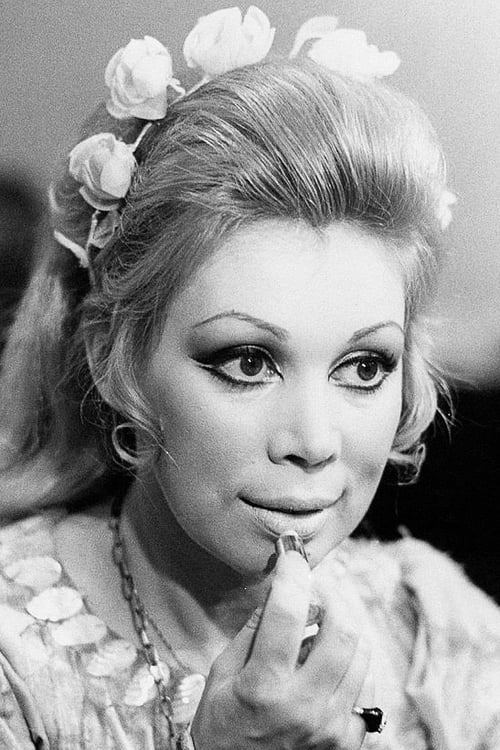
Mirella Freni
Nacimiento : 1935-02-27, Modena, Emilia-Romagna, Italy
Muerte : 2020-02-09
Historia
Mirella Freni (born Mirella Fregni, 27 February 1935 – 9 February 2020) was an Italian operatic soprano who had a career of 50 years and appeared at major international opera houses. She received international attention at the Glyndebourne Festival, where she appeared as Zerlina in Mozart's Don Giovanni and as Adina in Donizetti's L'elisir d'amore.
Freni is associated with the role of Mimi in Puccini's La bohème, which featured in her repertoire from 1957 to 1999 and which she sang at La Scala in Milan and the Vienna State Opera in 1963, conducted by Herbert von Karajan. She also performed the role in a film of the production and as her debut at the Metropolitan Opera in New York City in 1965. In the earliest opera DVDs, she portrayed her characters convincingly in both acting and singing. Freni was married for many years to the Bulgarian bass Nicolai Ghiaurov, with whom she performed and recorded. Her obituary from The New York Times describes her as a "matchless Italian prima donna".
Born in Modena, she had the same wet-nurse as Luciano Pavarotti, with whom she grew up and who was to become a frequent tenor partner on stage. She studied voice first with her uncle, Dante Arcelli, then with Luigi Bertazzoni and Ettore Campogalliani. She later changed her name thinking it was easier to pronounce. Freni made her operatic debut at the Teatro Municipale in her hometown on 3 March 1955 as Micaëla in Bizet's Carmen. She later married her teacher, the pianist and director Leone Magiera; the couple had a daughter. Freni resumed her career in 1958 when she performed Mimì in Puccini's La bohème at the Teatro Regio in Turin, and sang in De Nederlandse Opera's 1959–60 season. Her international breakthrough came at the Glyndebourne Festival, where she appeared in 1960 as Zerlina in Mozart's Don Giovanni, alongside Joan Sutherland as Donna Anna, and in 1962 as Susanna in The Marriage of Figaro, and as Adina in Donizetti's L'elisir d'amore, directed by Franco Zeffirelli.
In 1961, Freni first performed at the Royal Opera House in London as Nannetta in Verdi's Falstaff. She stepped in as Nanetta at La Scala in Milan for Renata Scotto. On 31 January 1963, she appeared there as Mimi in a production staged by Franco Zeffirelli and conducted by Herbert von Karajan. She became one of the conductor 's favourite singers in operas and concerts. The production was repeated at the Vienna State Opera the same year, and she appeared at the house in eleven roles, including the title role of Puccini's Manon Lescaut, and Amelia in Verdi's Simon Boccanegra.
On 29 September 1965, she first appeared at the Metropolitan Opera in New York City, again as Mimi, with Gianni Raimondi as Rodolfo who also made his house debut. Reviewer Alan Rich wrote in the New York Herald Tribune: Miss Freni is—well, "irresistible" will do for a start. Beautiful to look at, and actress of simple naturalness and overwhelming intelligence, she used voice and gesture to create a Mimi of ravishing femininity and grace. The voice itself is pure and fresh, operating without seam from bottom to top, marvelously colored at every point by what seems to be an instinctive response to the urging of the text. ...
Source: Article "Mirella Freni" from Wikipedia in English, licensed under CC-BY-SA 3.0.

Self (archive footage)
With a career that includes a 35-year tenure as composer of the Berlin Philharmonic and record sales topping 200 million, Herbert von Karajan is one of the most legendary figures in 20th-century classical music. Comprised of archival footage, performance highlights and interviews with the likes of Anne-Sophie Mutter, Christa Ludwig and Seiji Ozawa, this retrospective chronicles the life and times of the iconic Austrian maestro.
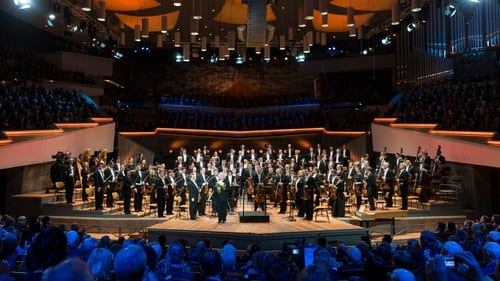
Self - Soprano
The annual New Year’s Eve Concert is one of the highlights in the calendar of every classical music fan in Berlin and beyond. On New Year‘s Eve, the Berliner Philharmoniker invite an exceptional soloist for a festive gala. Together, the musicians bid farewell to the old year and welcome the new. The 1998 concert was conducted by Claudio Abbado and featured Marcelo Álvarez (tenor), Mirella Freni (soprano), Simon Keenlyside (baritone), Christine Schäfer (soprano) performing: Wolfgang Amadeus Mozart: Le nozze di Figaro (Excerpts), Wolfgang Amadeus Mozart: Don Giovanni (Excerpts), Georges Bizet: L'Arlésienne (Excerpts), Gioachino Rossini: La gazza ladra: Overture, Giuseppe Verdi: Rigoletto (Excerpts), Giuseppe Verdi: Un ballo in maschera (Excerpts), Hector Berlioz: Le Carnaval Romain, Piotr Ilyich Tchaikovsky: Eugene Onegin (Excerpts), Giuseppe Verdi: La Traviata (Excerpts).

Fedora Romazov
Princess Fedora, who is to marry the Count the following day, arrives and sings of her love for him, unaware that the dissolute Count has betrayed her with another woman. The sound of sleigh-bells is heard, and the Count is brought in mortally wounded. Doctors and a priest are summoned, and the servants are questioned. It is proposed that Count Loris Ipanov, a suspected Nihilist sympathiser, was probably the assassin. De Siriex (a diplomat), and Grech (a police inspector) plan an investigation. Fedora swears on the jewelled Byzantine cross she is wearing that Count Andrejevich's death will be avenged.

Alice Ford
It is to composer and librettist Arrigo Boito and his constant pestering of the octogenarian Verdi that there remained within him one last great comedy fighting to get out that we owe this absolute miracle of an opera. Produced in 1893 as Verdi turned 80 there is much in this masterpiece that can be identified as a modernist neoclassical work. The use of short motifs instead of long arioso melodic lines, the spry and reduced orchestral textures and the lack of a single 'stand and deliver' dramatic declamatory aria all serve to make this more of a 20th century work than an example of 19th century late-Romanticism.

SInger
Tony Randall and some children, filmed in Connecticut, provide the framework of the history of some of the carols sung by opera stars.

Adriana Lecouvreur
Francesco Cilea's Adriana Lecouvreur concerns a doomed love based on a real story about an actress involved in a famous love triangle. Mirella Freni sings the title part in this production that was broadcast on television originally in 1989. Gianandrea Gavazzeni conducts the orchestra. Live from La Scala, 1989

Mimi
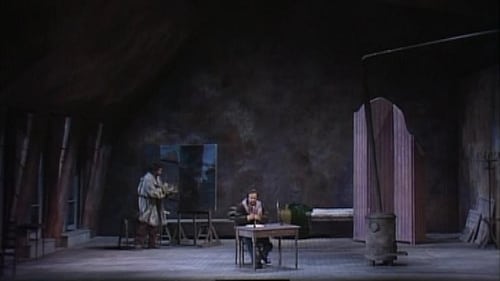
Mimì
La agridulce ópera de Giacomo Puccini sobre animosos bohemios y el amor condenado entre Rodolfo, el poeta idealista y Mimi, la florista tísica, es una serie de cuadros maravillosamente equilibrados que representan la contagiosa alegría de vivir de la juventud y el trágico desperdicio de la enfermedad y separación. La legendaria e incomparable asociación de Mirella Freni y Luciano Pavarotti como los dos amantes ha sido capturada en esta grabación especial en vivo desde el escenario de la Ópera de San Francisco. Brian Large ha adaptado la producción de Francesca Zambello para video, iluminando aún más la fascinante interacción de los personajes de Puccini. Gino Quilico canta Marcello, el pintoresco y tempestuoso pintor, cuya tempestuosa relación con la coqueta Musetta (cantada por Sandra Pacetti), refleja cómicamente el amor más profundo de Rodolfo y Mimi. Nicolai Ghiaurov canta Colline.
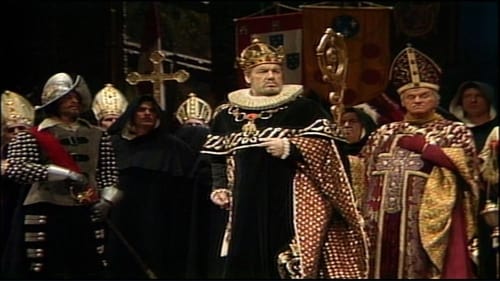
Elisabeth de Valois
Ghiaurov, Freni, and Bumbry were great voices in their time, and they are still effective here -- good enough musicians to put over the quite heavy vocal and expressive demands of their roles. Louis Quilico was never quite in that league, and he sounds a bit spread and woofy in places here, but he works hard and effectively to bring Rodrigo to life. Placido Domingo recorded his first Don Carlo, for EMI with Giulini, about 15 years before this production, but he looks and sounds fine here -- in the early 1980's he was doing very good Otellos and Lohengrins too, and Furlanetto, still in his 30's, brings a rich, young voice to an old part and succeeds in making the Grand Inquisitor vocally as well as expressively formidable. Levine brings both weight and energy to the score, and that reading fits well with the overall "traditional" design and production -- the Met's wardrobe budget must have been severely taxed, but everybody looks splendid.

Herself
In celebration of its 100th anniversary in 1983, the Metropolitan Opera hosts a four-hour performance uniting some of the world's most spellbinding opera singers and conductors. The event includes a ballet from Samson et Dalila and boasts incredible classical performances from Kathleen Battle, Plácido Domingo, Jose Carerras, Leonard Bernstein, Marilyn Horne, Leona Mitchell, Luciano Pavarotti and many more.

Elvira
It truly is an historic performance. Domingo looking and singing like a god pouring out golden tones; Renato Bruson sounds, like the sublime Verdian Baritone that he was at that time; Nicolai Ghiaurov proves again that he was one of the greatest "Verdi Basses"; Mirella Freni shows that there was more to her than just being Mimi and Susannah-in fact I can remember reading that at the time of the premiere of this production that there were fist fights (not unusual in La Scala's gallery) between Mirella's many fans--between those fans that just wanting her to continue singing the light lyric repertoire that they were use to her singing and those that felt she should and could sing the lyric-spinto repertoire which, of course, she proved that,indeed, she could (She's still singing more than twenty years later). This performance captures some of the best Verdi singers of the time doing dear ole wonderful Giuseppi proud.

Amelia Grimaldi
Abbado wholly vindicates Verdi’s intentions through his feeling for the shape of a whole scene, for the inherent subtleties of Verdi’s scoring and for certain rhythmic effects.
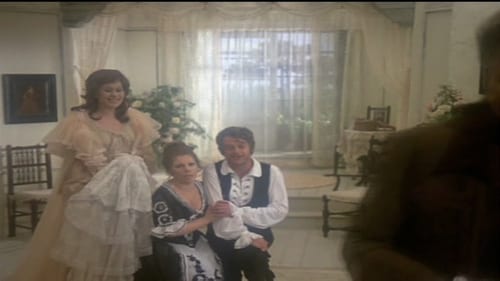
Susanna
Mozart's Marriage of Figaro is a comedy whose dark undertones explore the blurred boundaries between dying feudalism and emerging Enlightenment. Herman Prey's Figaro is admirably sung in a firm baritone and aptly characterized. So too, is his antagonist, Dietrich Fischer-Dieskau as the Count perpetually frustrated by the scheming wiles of Figaro and Susanna, here the perky Mirella Freni, who sings and acts like a dream. The Countess is creamy-voiced Kiri Te Kanawa, and the Cherubino, Maria Ewing, looks just like the horny, teenaged page she's supposed to be. The all-star leads are complemented by worthy supporting singers, the Vienna Philharmonic at the top of its form, and the experienced Mozartian, Karl Böhm conducting a stylishly fleet performance.

Cio-Cio-San, known as Butterfly
Madama Butterfly es una ópera en tres actos de Giacomo Puccini, con un libreto en italiano de Luigi Illica y Giuseppe Giacosa. El libreto de la ópera se basa en parte en el cuento "Madame Butterfly", de John Luther Long, que fue dramatizada por David Belasco. Los elementos también parecen derivar de la novela Madame Chrysanthme de Pierre Loti. (FILMAFFINITY)

Desdemona
Herbert von Karajan directed this film of Verdi’s Shakespearan masterpiece as well as conducting the Berlin Philharmonic. As the tragic Moor of Venice, arguably his greatest role, John Vickers (in the words of critic David Cairns) "commands both the notes and the moral grandeur of the part. … And he has the aura of greatness – greatness of heart, of bearing, of musical and dramatic conception". Mirella Freni is a heartbreakingly lovely and fragile Desdemona, while the fine English baritone Peter Glossop plays the villainous Jago.

Micaëla
This spectacular opera film was taped in 1967 and is based on the 1966 Salzburg Festival production directed by Herbert von Karajan himself, who also conducts the fabulous Vienna Philharmonic Orchestra. The production features the three greatest exponents of their respective roles at the time: Grace Bumbry’s magnificently seductive-toned Carmen, Mirella Freni’s ineffably lovely, touching Micaëla and Jon Vickers’s thrillingly manic-depressive Don José. On its release the film was hailed by Die Presse, (Vienna) as a “unique artistic event”, while Le Monde felt that Karajan’s production brought “a whole new dimension” to the opera, “combined with a magisterial interpretation”. A classical and utterly dramatic approach to probably the world's most beloved opera – Karajan’s Carmen is as much a delicacy for opera fans as it is a perfect starter for newcomers.

Mimi
In the early 1960s two artistic giants, conductor Herbert von Karajan and director Franco Zeffirelli, joined forces to create this milestone production of Puccini’s masterpiece at Milan’s Teatro alla Scala. Filmed in that legendary opera house in 1965, with Zeffireli himself directing for the cameras, this “Bohème” has been acclaimed universally for its unique theatrical impact and visual splendour. Starring the young Mirella Freni in her carreer-making performance. – For the first time the full dimension of opera on film.







